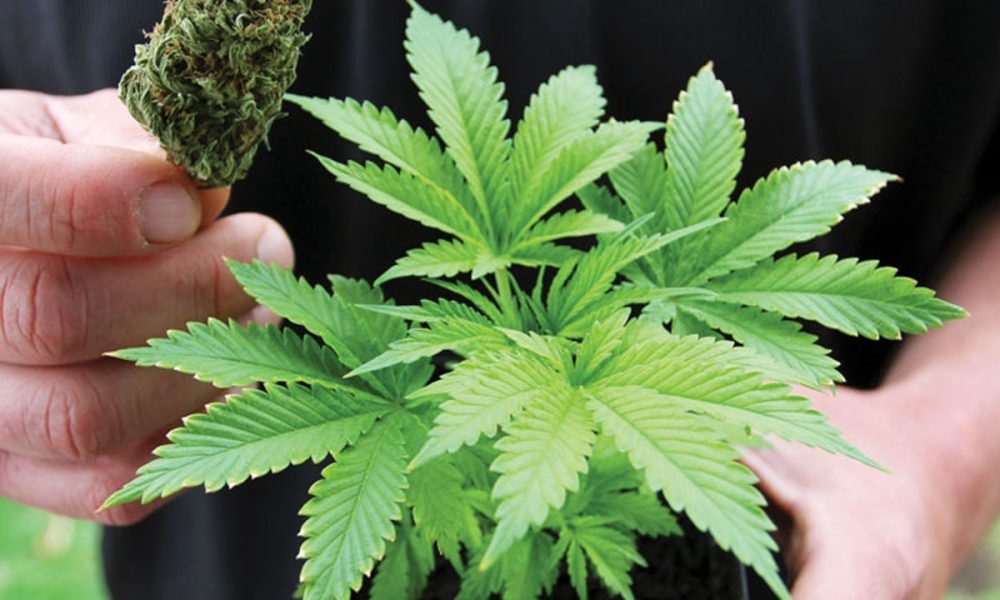While Malheur County has been the state’s top per capita pot purveyor for three consecutive years, selling weed in Oregon isn’t easy.
Despite the county racking up $104 million in retail sales, the area saw a 6 percent decline in sales in 2022.
The county’s proximity to Idaho, one of a handful of states where recreational and medical cannabis consumption remains illegal, has been a lifeline for the area’s retail cannabis stores, amid what an Oregon Liquor and Cannabis Commission report proclaims are the weakest economic conditions the recreational pot market has seen since its legal introduction in 2016.
The state commission reported in February that median retail prices fell to $4 a gram at the start of 2023, off 16 percent from a year earlier.
The state has way more weed than Oregonians can consume, according to TJ Sheehy, director of analytics and research with the state cannabis commission.
Following a record year in 2020, where recreational pot sales surged to $1.1 billion, the state’s pot growers increased their plants in 2021, optimistic about the booming bud market, the report noted.
However, demand for weed dipped the following year, and the record outdoor harvest in the fall of 2021 set off a price drop that put the entire supply chain under pressure in 2022.
The overabundance of marijuana in 2021 and 2022 prompted historically low wholesale and retail prices.
Meanwhile, local cannabis retailers, such as Matthew Westgate, operations manager for Cannabis and Glass in Ontario, said the store’s goal is to make up the loss in volume for what they have lost in price.
“We’re trying to be the Walmart of weed,” he said.
Those customers that he said the store is looking to target are the 800,000 people from Boise and other surrounding cities in Idaho.
“We try to target them with lower prices,” he said. “We’ve just been doing what we can.”
Cannabis and Glass, which has three other retail stores in Washington and a medicinal cannabis dispensary in Iowa, opened its Ontario outlet in early 2021, on the heels of Oregon’s banner year in retail pot sales.
With so many growers in Oregon looking to offload product at record-low prices, Westgate said he is unsure if he sees the market funk shaking out anytime soon.
“There’s so much marijuana right now that’s much bigger than the demand,” he said.
He said proposed legislation by state Sen. Lynn Findley and state Rep. Mark Owens that would raise the cap on cannabis taxes from 3% to 10% would have some impact on the market.
Cory Goade, manager of Elevation 2150, said prices have mostly stayed the same since the store opened in 2021.
Nonetheless, he said the proximity to Idaho’s weed consumers is why retailers in the area have their stores in Malheur County.
“They wouldn’t make it without them,” he said.
Goade said he would like to see the state rein in the number of growers in Oregon so that prices can go back up. The market, he said, is glutted.
Last year in response to the crowded marketplace, state lawmakers passed legislation requiring the state cannabis commission hold off issuing more marijuana licenses. Sheehy said the moratorium is set to run through March 2024.
He said legislators now are considering House Bill 2515, which would allow the state cannabis commission to extend the current moratorium and then limit the number of licenses based on population.
Sheehy said while marijuana grows abundantly in Oregon, weed remains prohibited under federal law and cannot be sold legally across state lines. The lack of interstate commerce means retail or producer businesses have nowhere else to legally go with historically high supply levels.
According to Sheehy, Oregon has ideal weed cultivation advantages compared to other states but the consumer population is moderately low.
Until the federal government creates pathways to interstate commerce, Sheehy said, Oregon’s recreational pot market will continue to have a competitive marketplace with low prices for consumers but low margins for cannabis retailers and producers.
“There are some things that are unique about marijuana,” he said, “but the law of supply and demand is not one of them. That is something cannabis has in common with almost every other market.”
NEWS TIP? Send an email to [email protected].
HOW TO SUBSCRIBE – The Malheur Enterprise delivers quality local journalism – fair and accurate. You can read it any hour, any day with a digital subscription. Read it on your phone, your Tablet, your home computer. Click subscribe – $7.50 a month.




